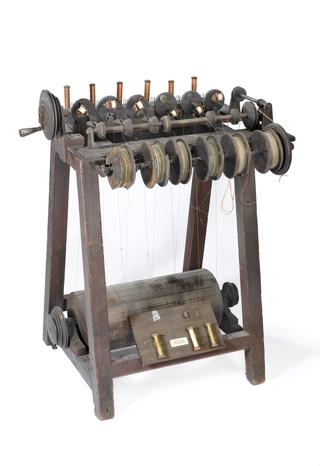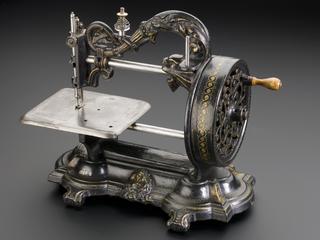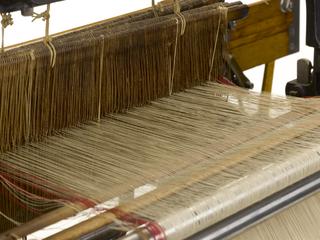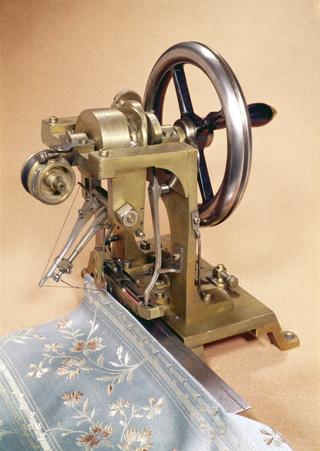




Early specimen of artificial silk made by Sir Joseph Swan, 1883; crocheted/embroidered by Lady Swan to form a border to a handkerchief, for display at Exhibition of Inventions, London 1885.
In 1877, Swan began his work which resulted in his invention of the incandescent filament electric lamp. In 1883 Sir Joseph devised a new principle of filament manufacture which consisted of squirting an emulsion of cellulose nitrate in acetic acid through a nozzle into a coagulating liquid, in this case alcohol. Swan denitrated the fibres by treating them with a solution of ammonium sulphide. These were then carbonised to be used in his lamps. Swan saw the possibilities of the use of cellulose as a textile fabric but did not exploit this possibility. Swan's work influenced the later work of his employees, Fred Topham, Legh Powell and C H Stearn.
Details
- Category:
- Textiles Machinery
- Object Number:
- 1927-214
- Materials:
- cotton, artificial silk and viscose
- Measurements:
-
overall: 810 x 810 x 45 mm
- type:
- artificial silk
- credit:
- Morcom, Mrs. F. Isobel




